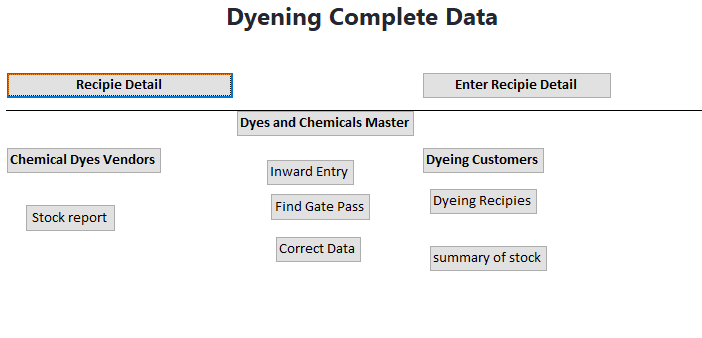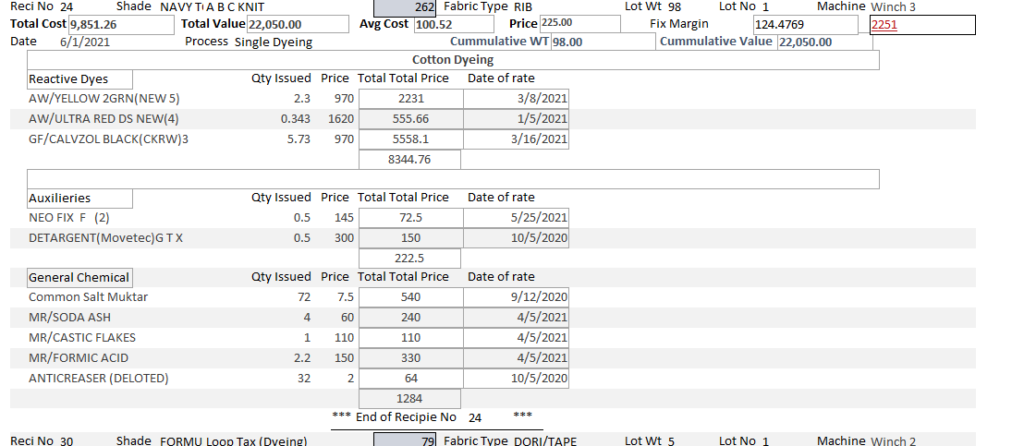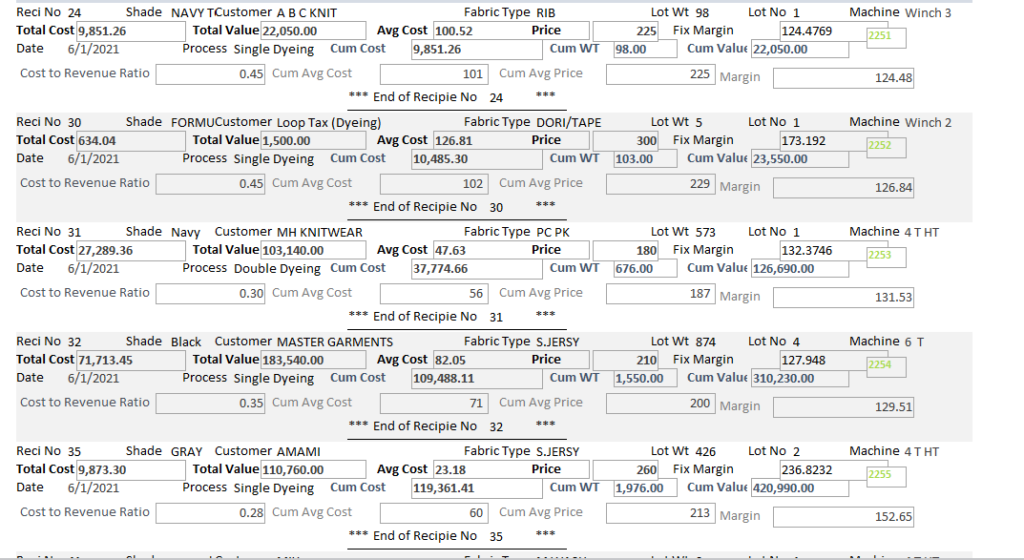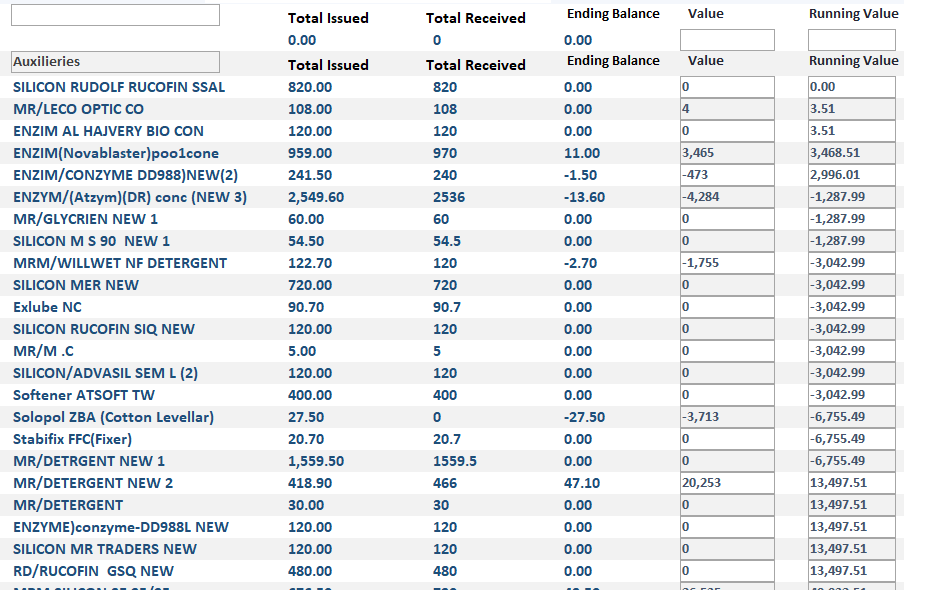Background
S&B Textiles, a garments manufacturing company with in-house Knitting, Dyeing, and Garments manufacturing units, was acquired by new management while operating at a loss. Dyeing, the most critical and cost-intensive unit, consumed large amounts of electricity, gas, dyes, and chemicals, accounting for a significant portion of production costs. In particular, dyes and chemicals, which have numerous varieties, shades, and quality levels, made up approximately 60% of dyeing costs.
The previous cost management system was inefficient, relying on manual Excel-based calculations and a standalone accounting software that merely recorded expenses after receiving them from the dyeing department. This system was prone to errors, delays, and a lack of real-time insight, resulting in significant cost leakages, discrepancies, and an inability to calculate precise costs for production.
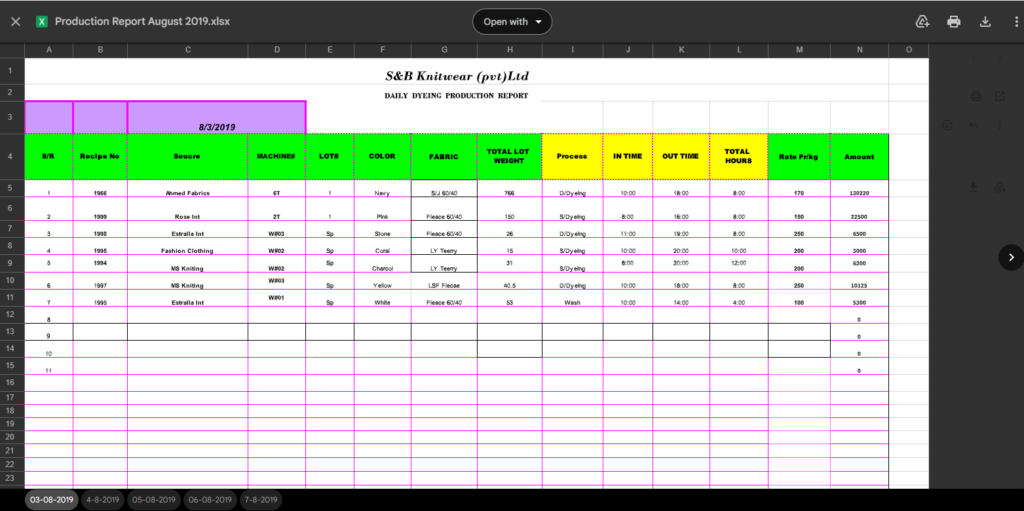
Critical Success Factor
The most critical factor identified for improving profitability was the ability to calculate dyeing costs accurately, particularly the costs related to dyes and chemicals. Proper tracking and control over dye and chemical usage could help the company manage costs more effectively and inform key decisions related to pricing and order acceptance.
Solution: Implementation of a Business Intelligence-Driven System
- Relational Database and Inventory System
- Goal: Develop a system that could centralize data, automate inventory management, and provide real-time cost tracking to eliminate manual errors and inefficiencies.
- Implementation: A relational database using Microsoft Access was created to manage inventory and costs for dyes and chemicals. Key features included:
- Centralized Data Entry: All dye and chemical deliveries were entered into the system through structured forms that captured essential details like color, supplier, prices, and quantities.
- Automated Issuance and Perpetual Inventory: Each dyeing recipe had an associated cost calculation, enabling a live update of inventory levels and costs as materials were issued against recipes.
- Strict Data Integrity Controls: Spreadsheets were eliminated from the process to ensure that all data flows through the system. This prevented unauthorized adjustments and minimized human errors.
- Enhanced Cost Management and Forecasting
- Automated Recipe Cost Calculation: The system generated target costs for each recipe, helping the company estimate costs in advance, which in turn supported pricing and order acceptance decisions.
- Real-Time Access and Tracking: Tablets and laptops enabled real-time inventory and cost tracking, holding store managers accountable for any discrepancies.
- Daily Monitoring and Reporting
- Crystal Reports and Power BI Integration: To enhance visibility and facilitate decision-making, Power BI dashboards and SAP Crystal Reports provided real-time data visualizations and reports on production, inventory, and costs.
- Continuous Improvement through BI Dashboards: Power BI dashboards highlighted trends in costs, inventory levels, and order profitability, empowering management to make timely, informed decisions.
Benefits and Business Impact
1. Efficiency and Accuracy
- Elimination of Manual Processes: Automated calculations and inventory updates removed time-consuming manual tasks, reducing errors and delays.
- Accurate Data for Decision-Making: Real-time access to accurate cost and inventory data enabled better control over expenses and more informed decision-making.
2. Cost Savings
- Just-in-Time Inventory Management: Reducing unnecessary stock levels lowered holding costs and improved cash flow.
- Optimized Recipe Costing: Automated cost calculation for each dyeing recipe facilitated more accurate pricing and improved profit margins.
3. Operational Improvements
- Improved Production Planning: Real-time tracking of inventory and production forecasts enabled management to anticipate monthly outcomes and make adjustments proactively.
- Increased Accountability and Transparency: By monitoring inventory levels closely, management could hold employees accountable, reducing waste and discrepancies.
4. Foundation for Strategic Initiatives
- Data Warehousing for Advanced Analytics: A data warehouse was implemented to support long-term, strategic decision-making, laying the foundation for trend analysis and predictive insights.
- Continuous Improvement and Innovation: The BI system facilitated ongoing improvements by providing data insights that supported further optimization efforts.
Conclusion: BI as a Game Changer
The BI implementation transformed S&B Textiles’ dyeing operations from an inefficient, loss-incurring process into a streamlined, data-driven system that provided accurate and timely insights. This resulted in enhanced profitability, improved cash flow, and an empowered decision-making process, positioning the company for sustained growth and competitiveness in the garment manufacturing industry. The case of S&B Textiles demonstrates how integrating BI solutions can turn a struggling business around by enhancing efficiency, accountability, and strategic foresight.
Screenshots of Perpetual Inventory System

